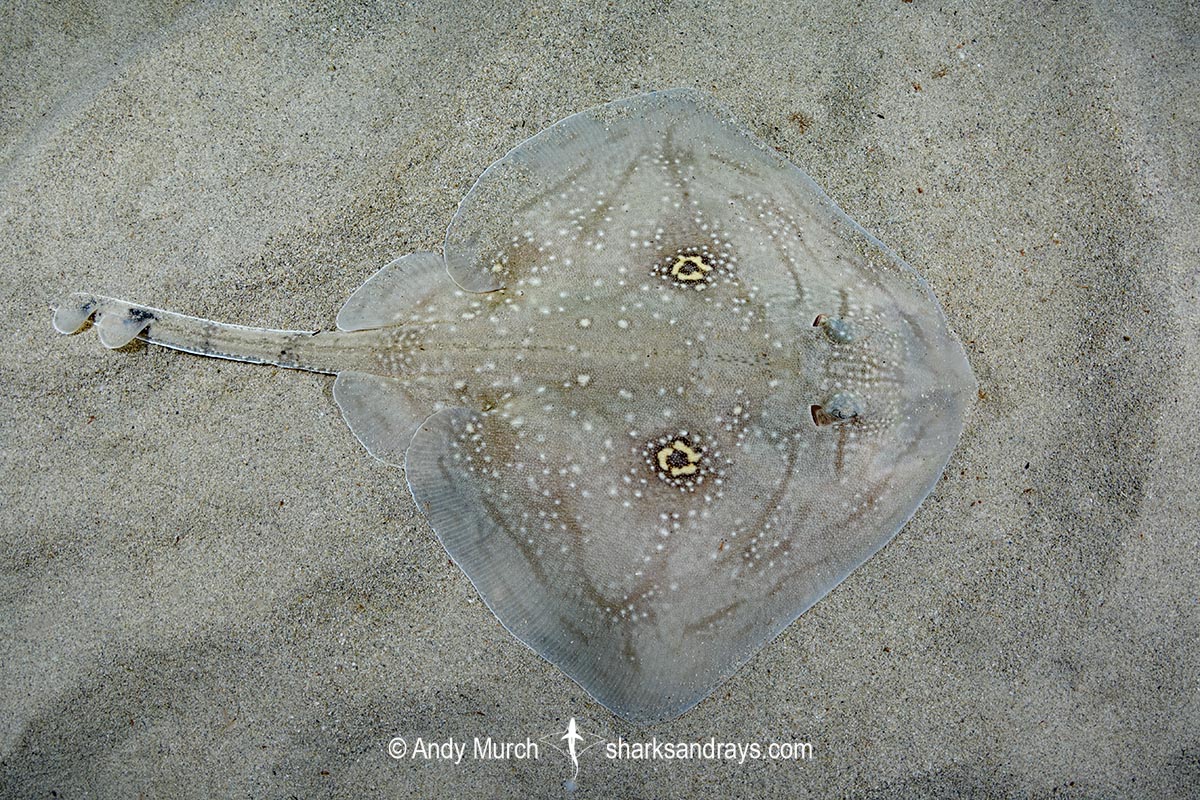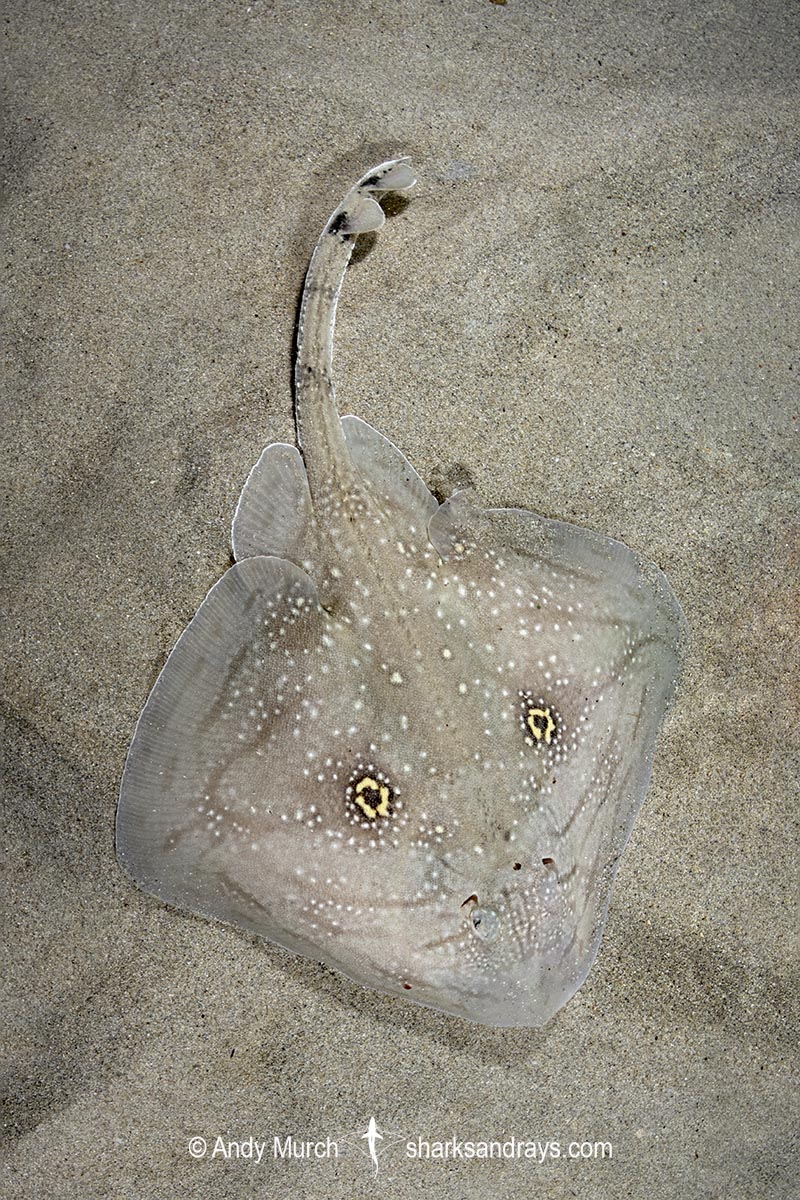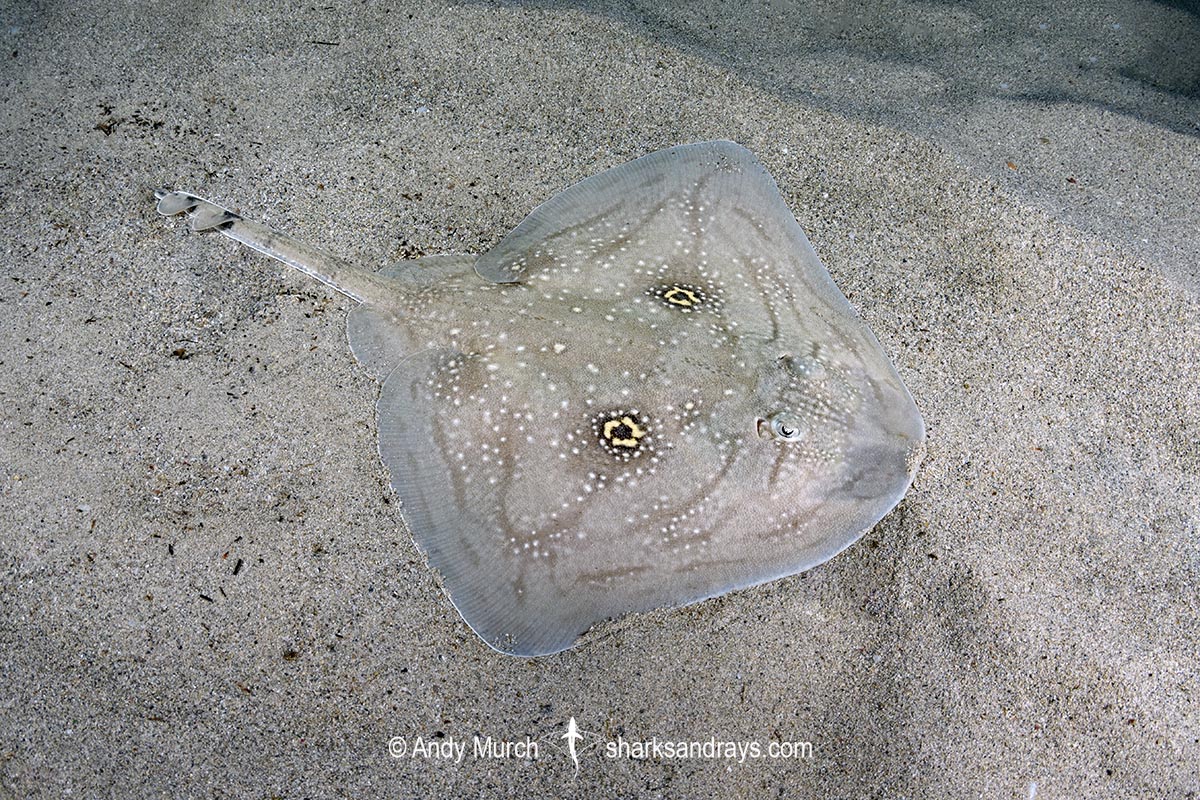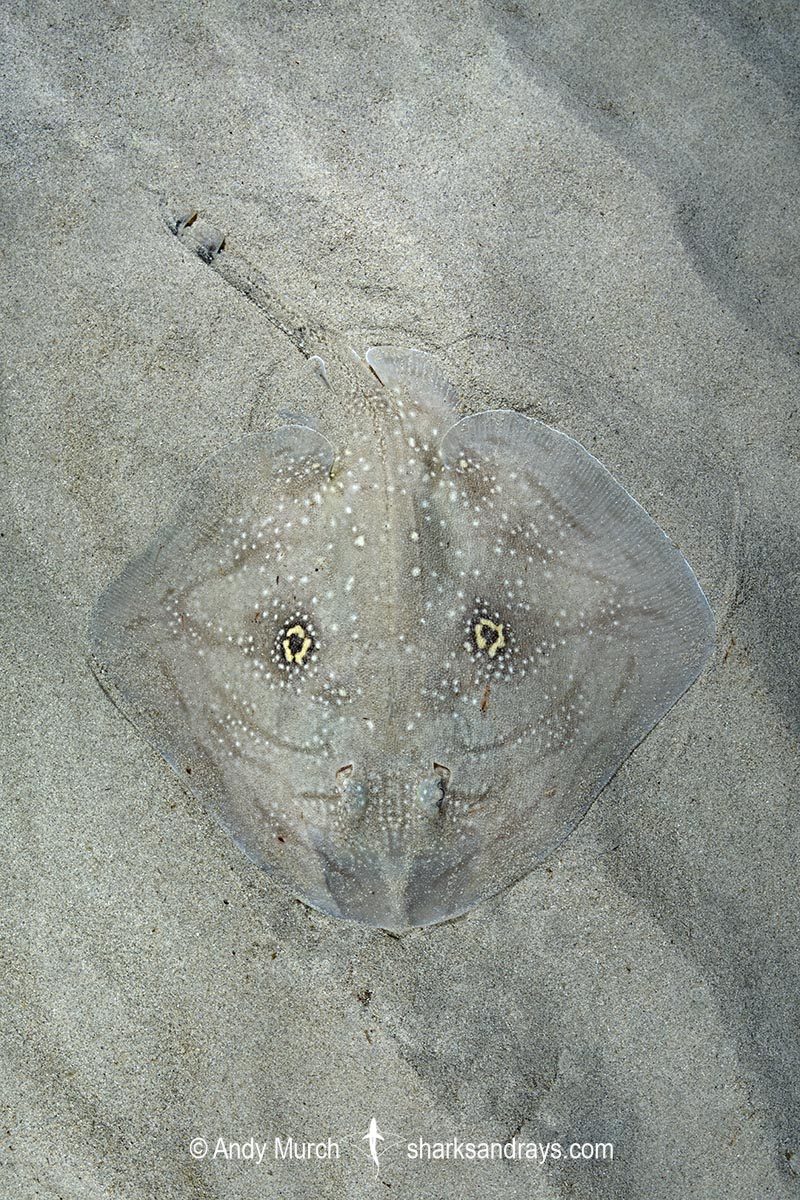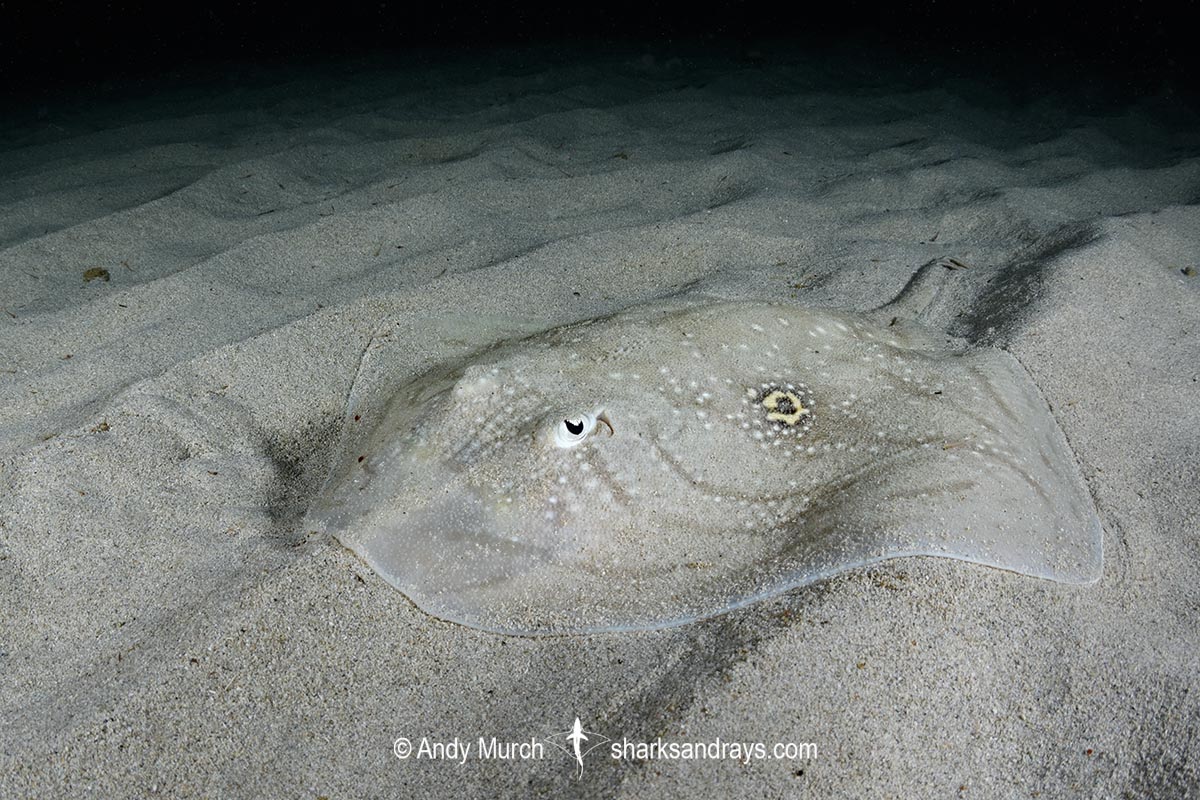Common names
Mediterranean Rough Skate, Rough Skate, Rough Ray (UK).
Binomial
Raja radula.
Synonyms
Raja atra.
Identification
A medium-sized skate with a somewhat rounded kite-shaped disc. Disc width ~1.2 x disc length. Snout short, anterior angle extremely obtuse or broadly rounded, with a slightly protruding tip. Snout length 2.3x interorbital space. Eyes small.
Anterior margins of pectoral fins mostly straight (except at rounded tip) or weakly undulate. Pectoral apices narrowly rounded. Disc covered in small prickly denticles. 3-4 small nuchal thorns. 22-28 thorns on midline from nape to tail. Row of small lateral thorns along sides of tail. Pelvic fins relatively large, weakly notched. Anterior pelvic lobe much shorter than posterior lobe. Tail narrow and relatively long. Dorsal fins well separated, with rounded margins. Usually 2 interdorsal thorns.
Colour
Dorsum grey or brownish-grey, with thin broken dusky lines running parallel to disc margins, scattered white spots, and small but prominent pectoral ocelli consisting of irregular yellow rings with a black centre (sometimes containing white spots) and black outer margins. Tail with two thin dusky bands between base and first dorsal, and a white lateral keel. Dorsal fins greyish brown. Ventrum white.
Size
Maximum length ~70cm. Egg case length 5-6cm.
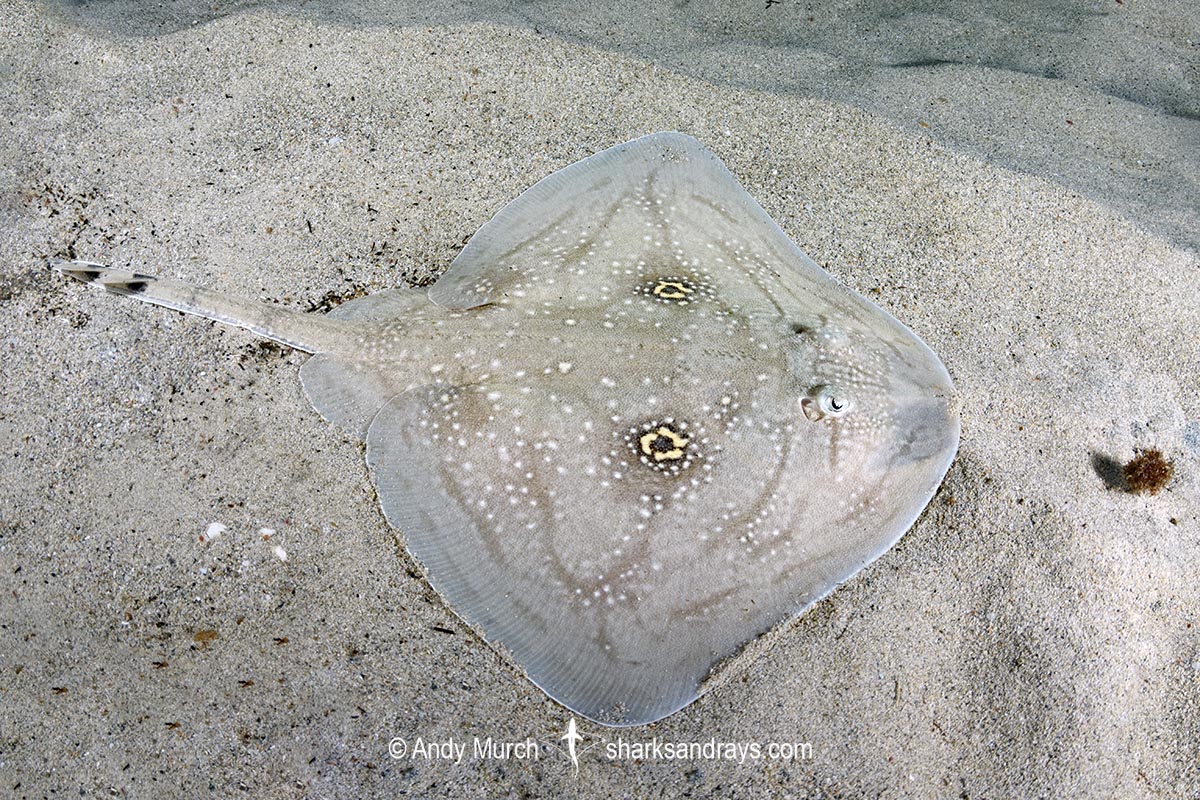
Conservation Status
ENDANGERED
The rough skate (Raja radula) is a relatively rare skate species with a small range within the Mediterranean Sea that is mostly concentrated around the Balearic Island and Tunisia. Although no species specific catch data is available, fishing intensity in this region has intensified and skate landing have significantly decreased by more than 50% within the last three decades, with a high probability of continued depletion.
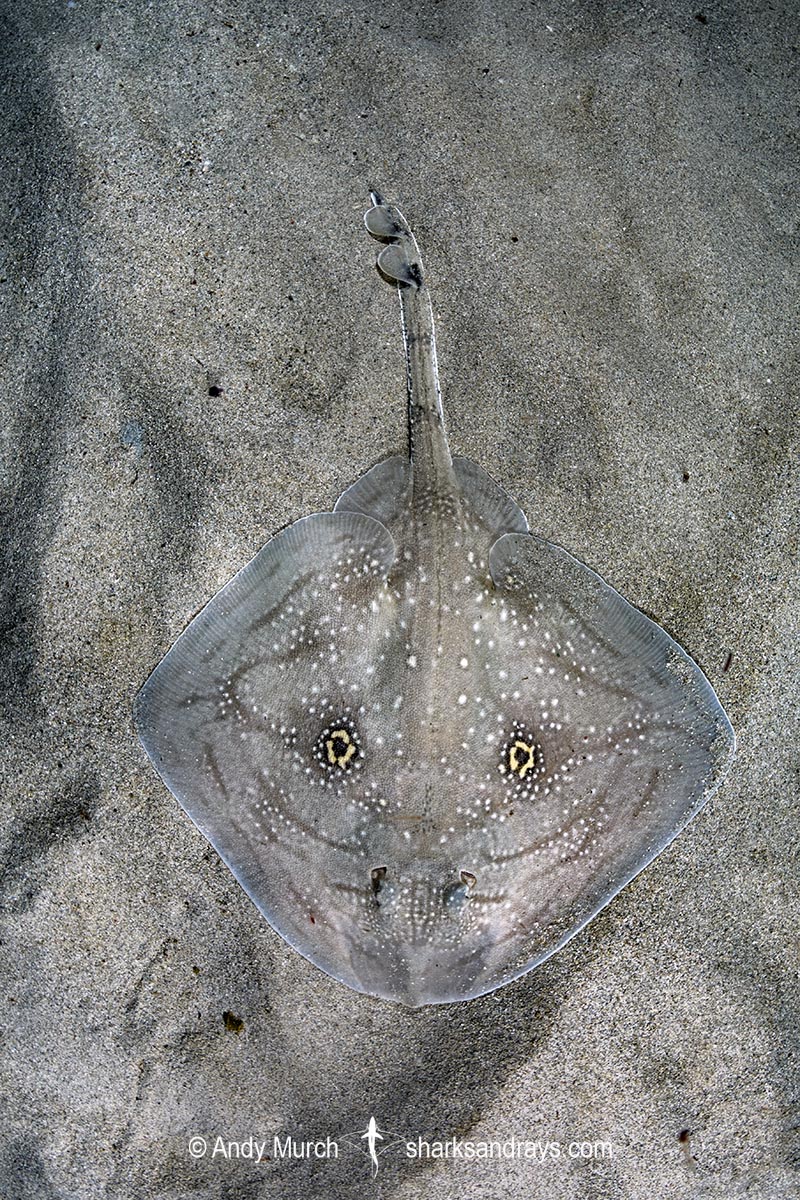
Habitat
Warm-temperate to temperate seas. Demersal on sand and gravel substrates. From shallow bays (in the balearic islands) to 350m.
Distribution
Recorded throughout the Mediterranean but mostly the rough ray population is mostly concentrated around the Balearic Islands. Probably a Mediterranean endemic. Reports from the Atlantic coast of Morocco and Portugal require verification.
Reproduction
Oviparous. Egg cases are deposited throughout the year, but more commonly in spring and summer. Egg cases are 51-57mm.
Diet
Diet consisted of benthic invertebrates and fishes.
Behavior
Around the Balearic Islands, rough skates move into shallow water in the winter.
Reaction to divers
Easy to approach. Remains motionless even when uncovered, unless heavily harassed.
Diving logistics
In the cooler months (November to May) Mediterranean rough skates are quite easy to fins at dive sites around the island of Mallorca. Cala d’Egos on the east end of the island is a particularly productive spot, where divers can expect to see multiple skates on most winter night dives.
What’s new
View our full list of updates
Similar species
Speckled Skate (Raja polystigma)
Distinguished by blacker ocelli, dark snout, and lack of transverse lines on disc.
Twineye Skate (Raja miraletus)
Distinguished by smoothly rounded ocelli with blue centres, and lack of transverse lines on disc.

